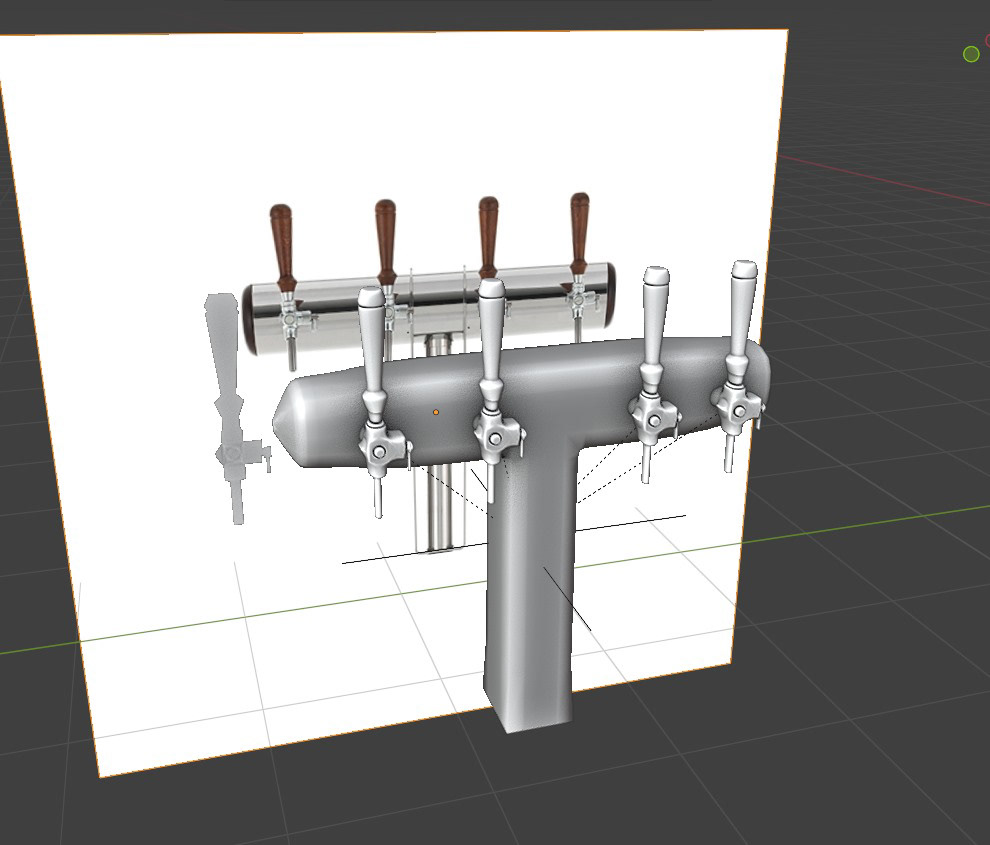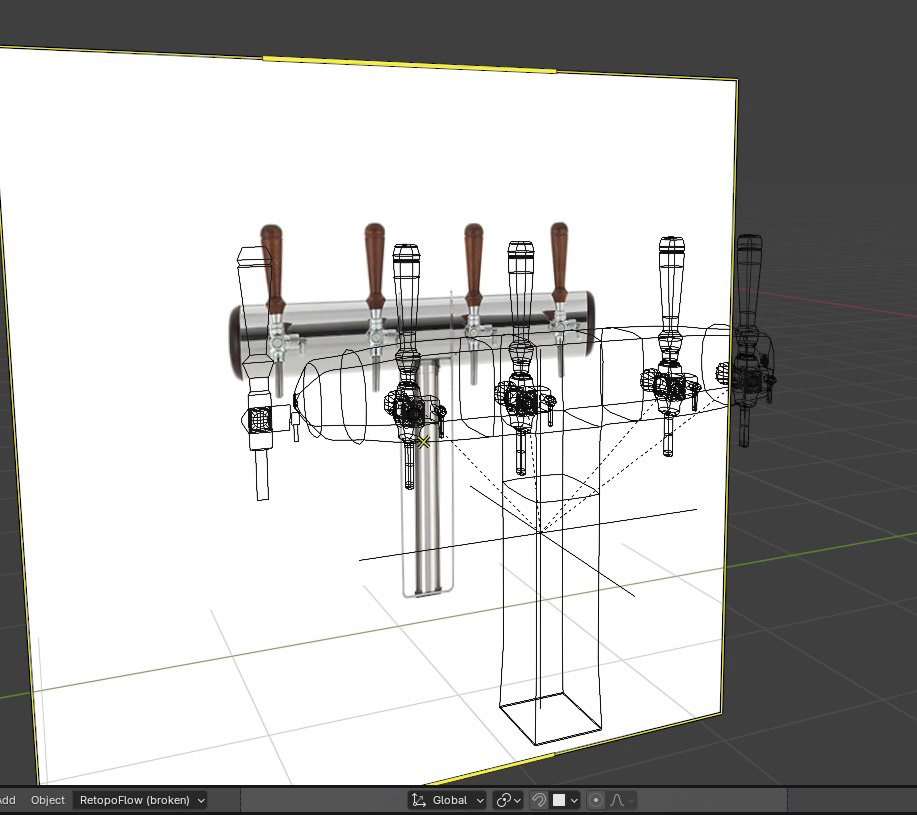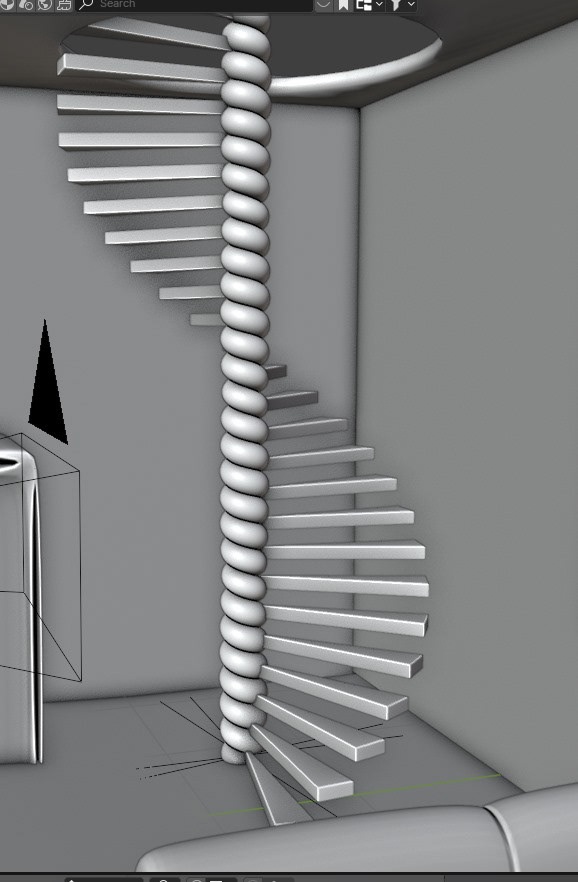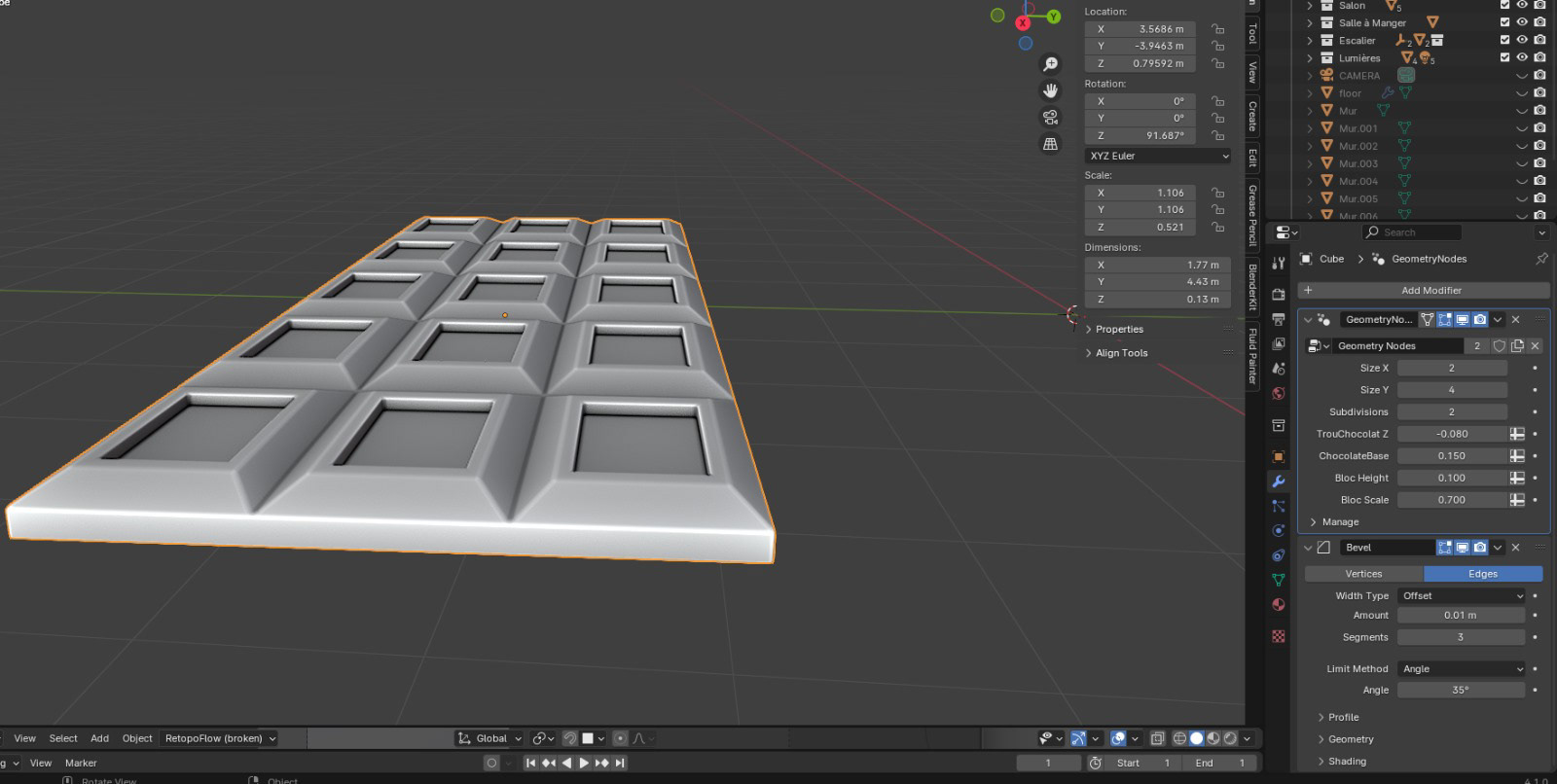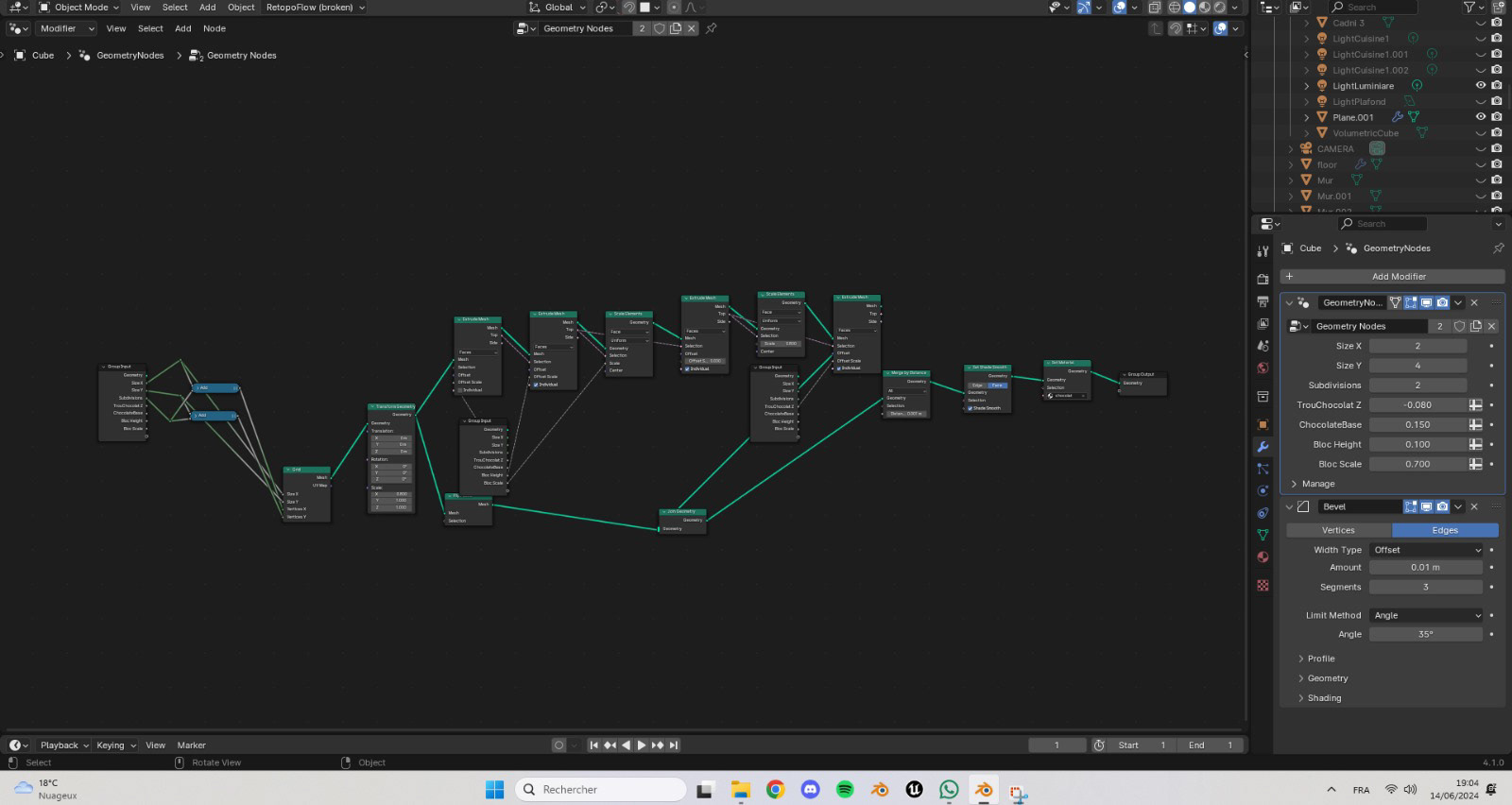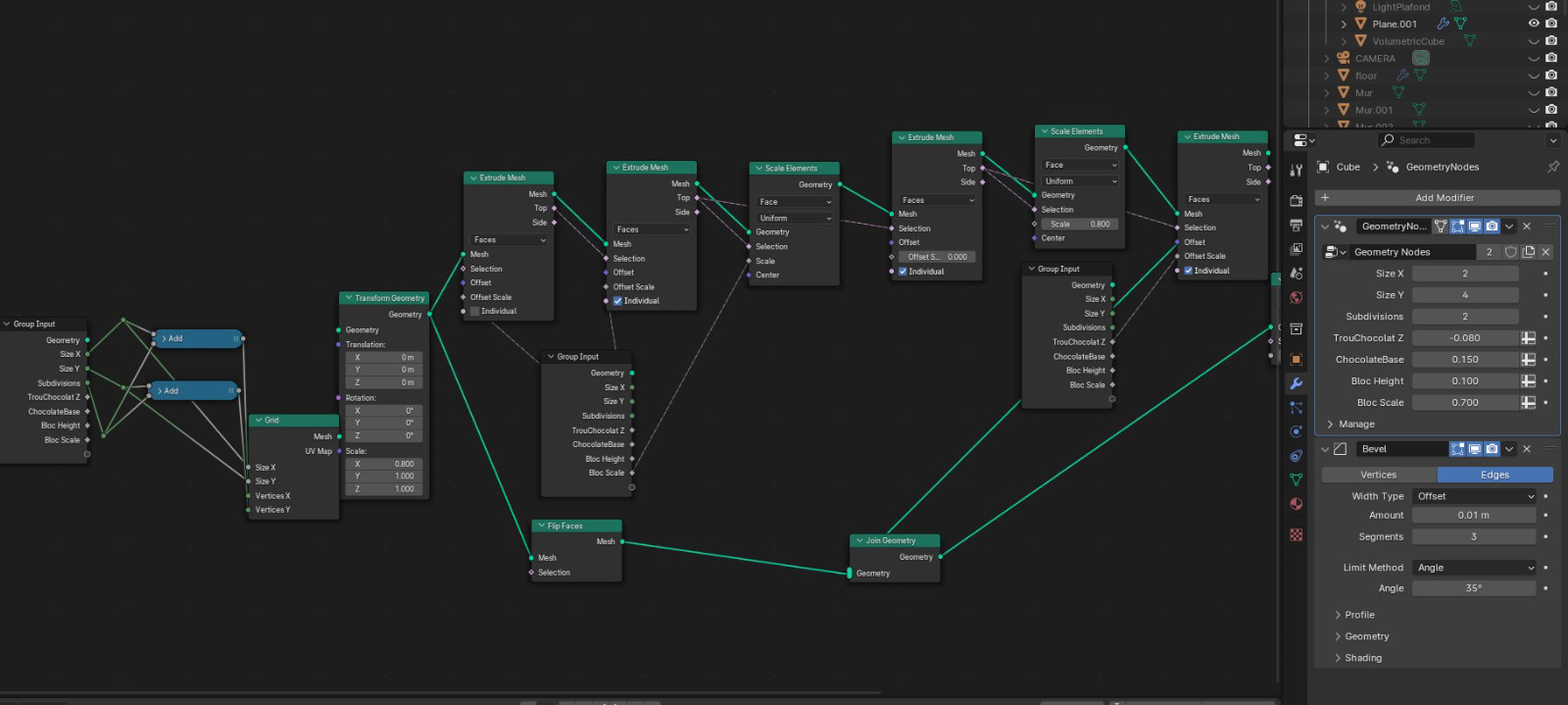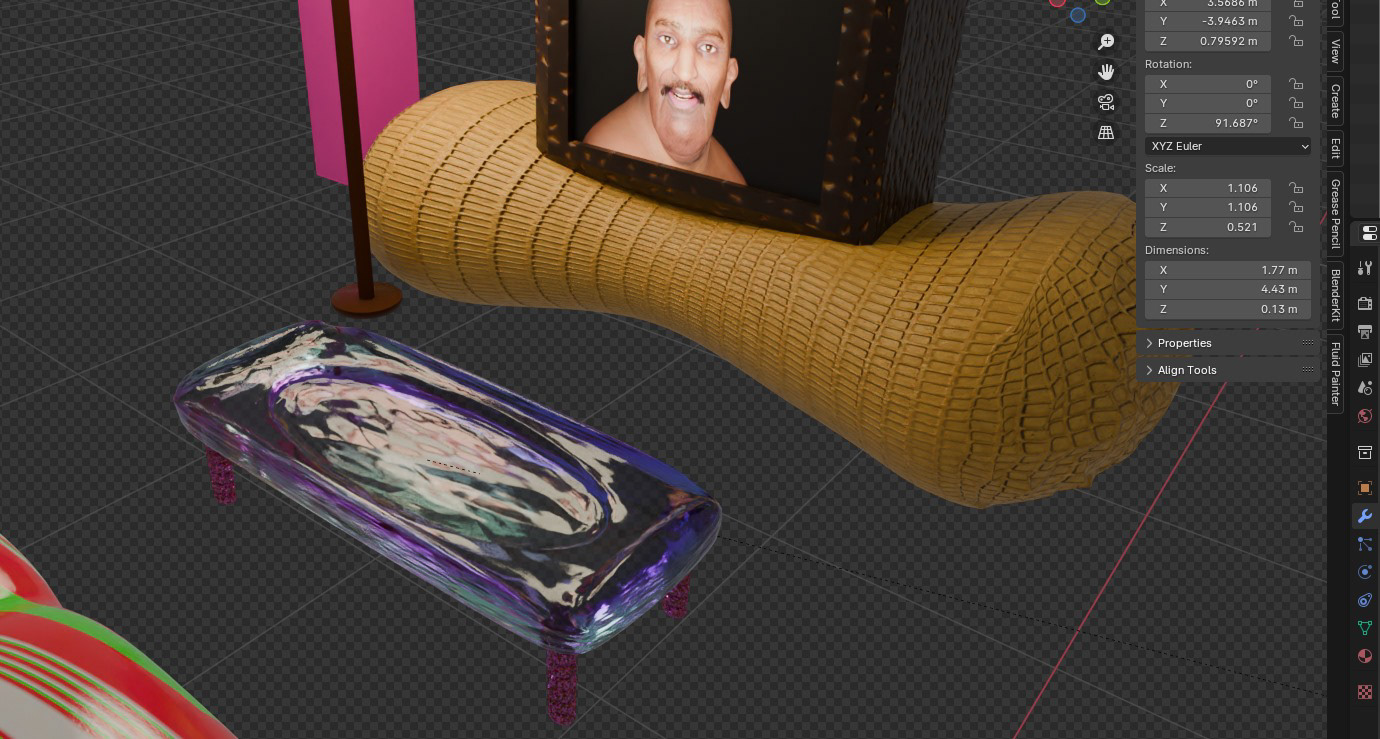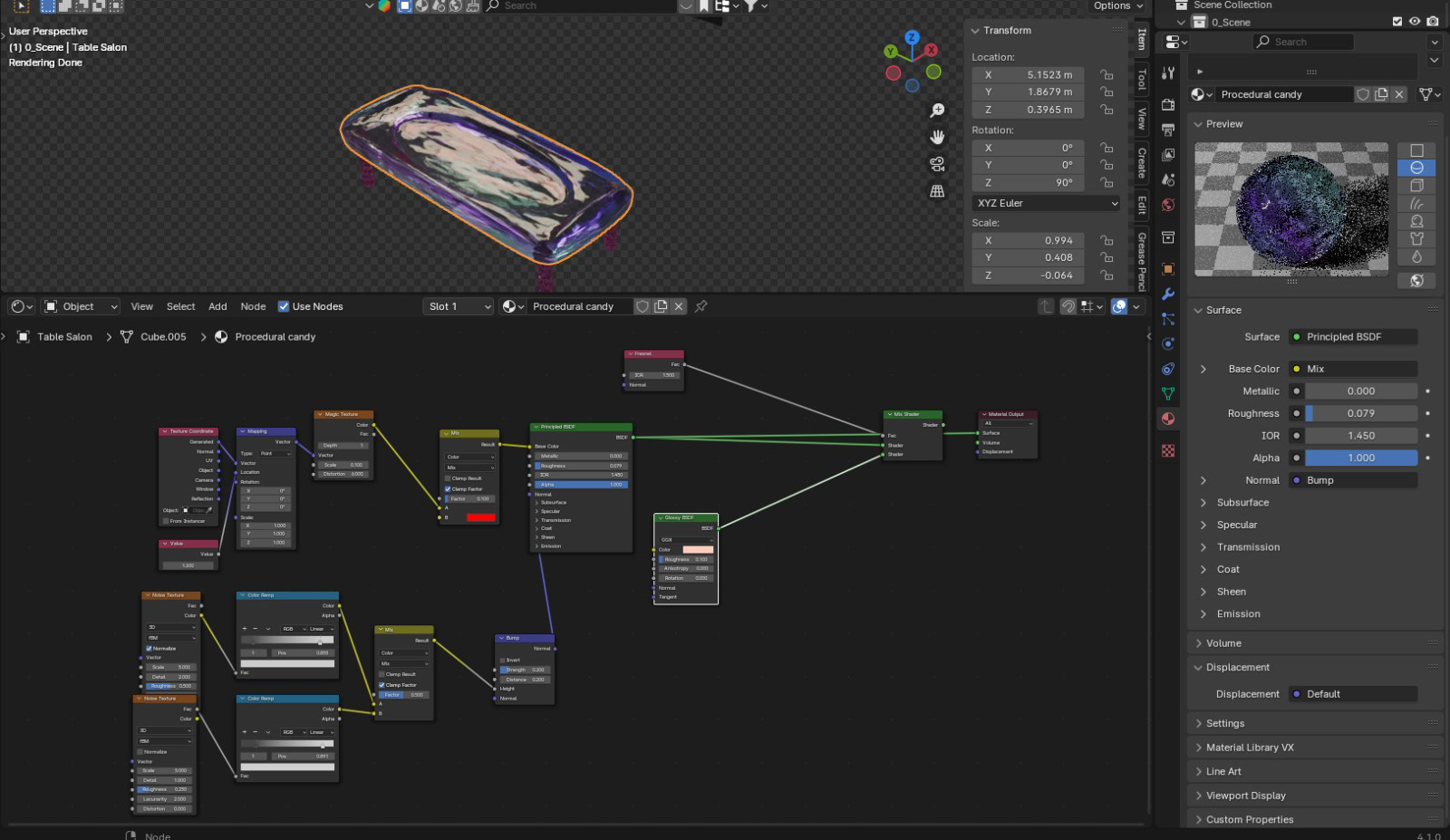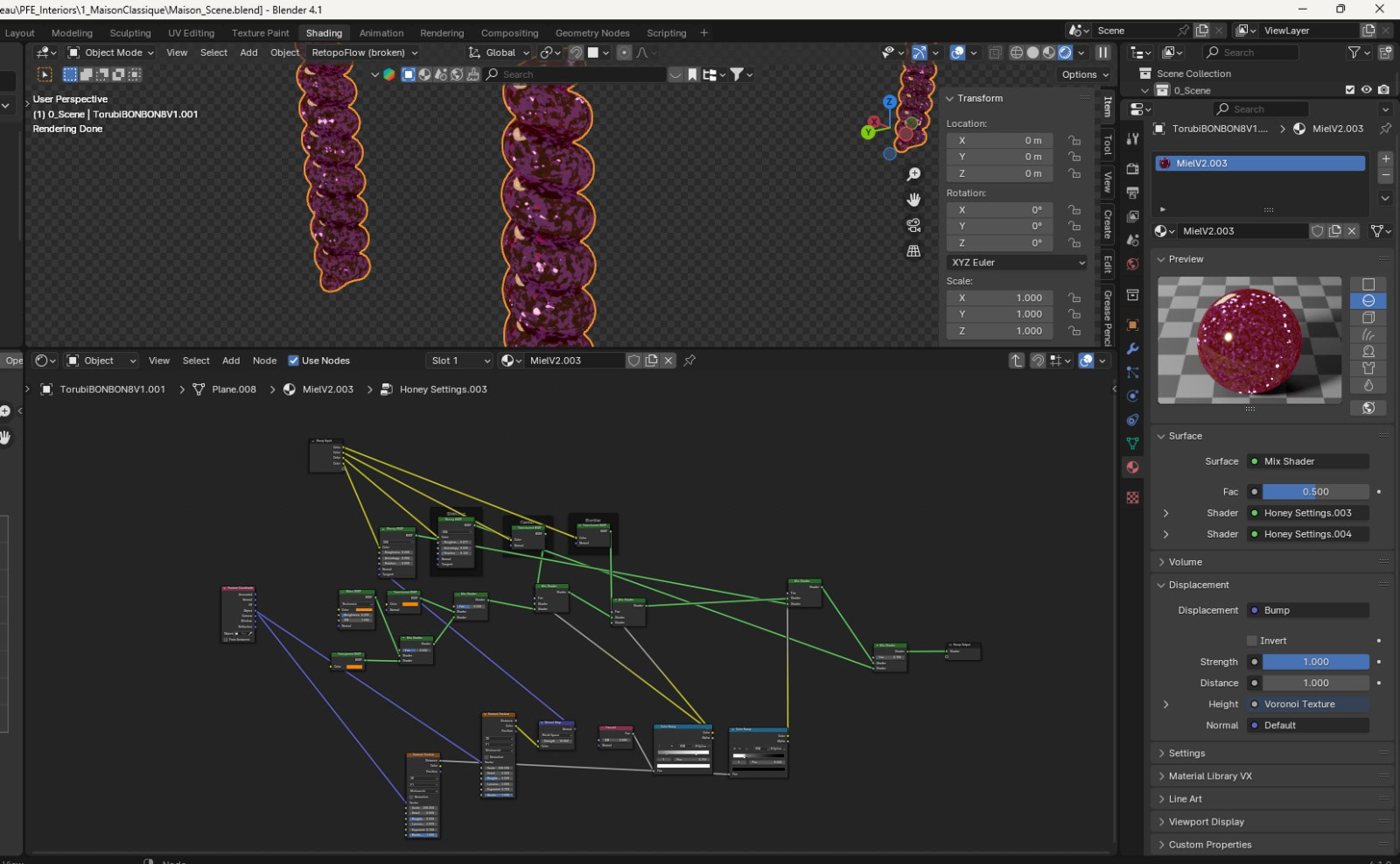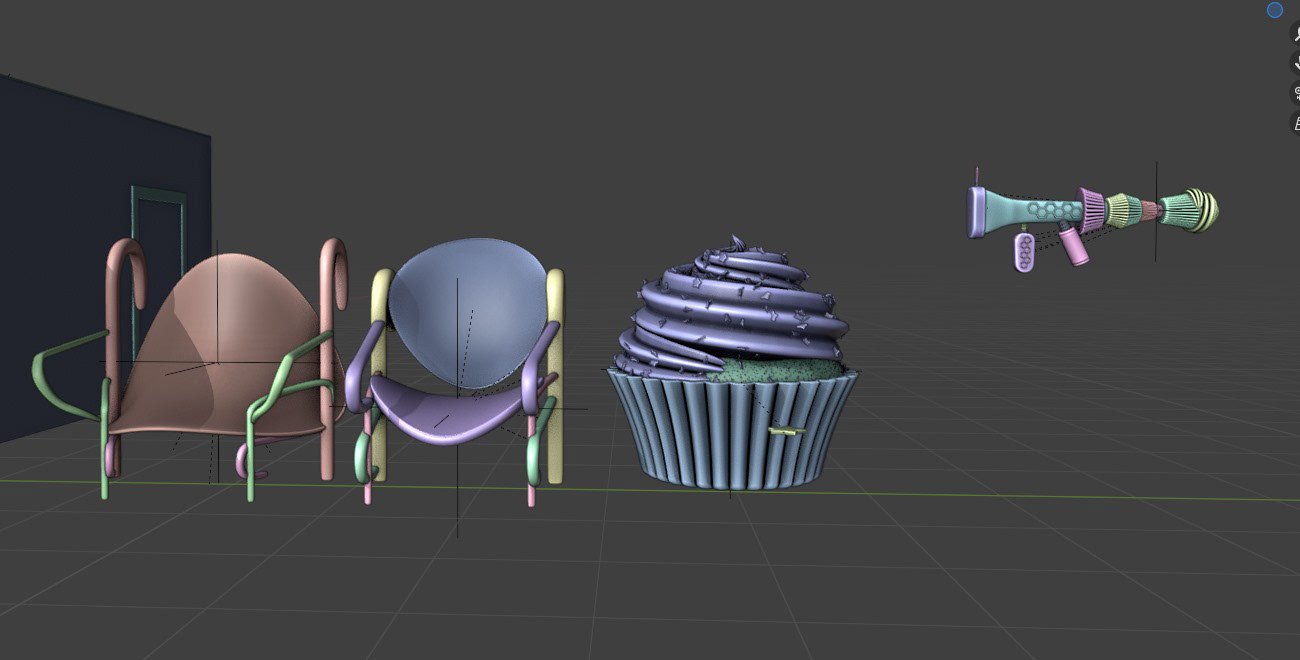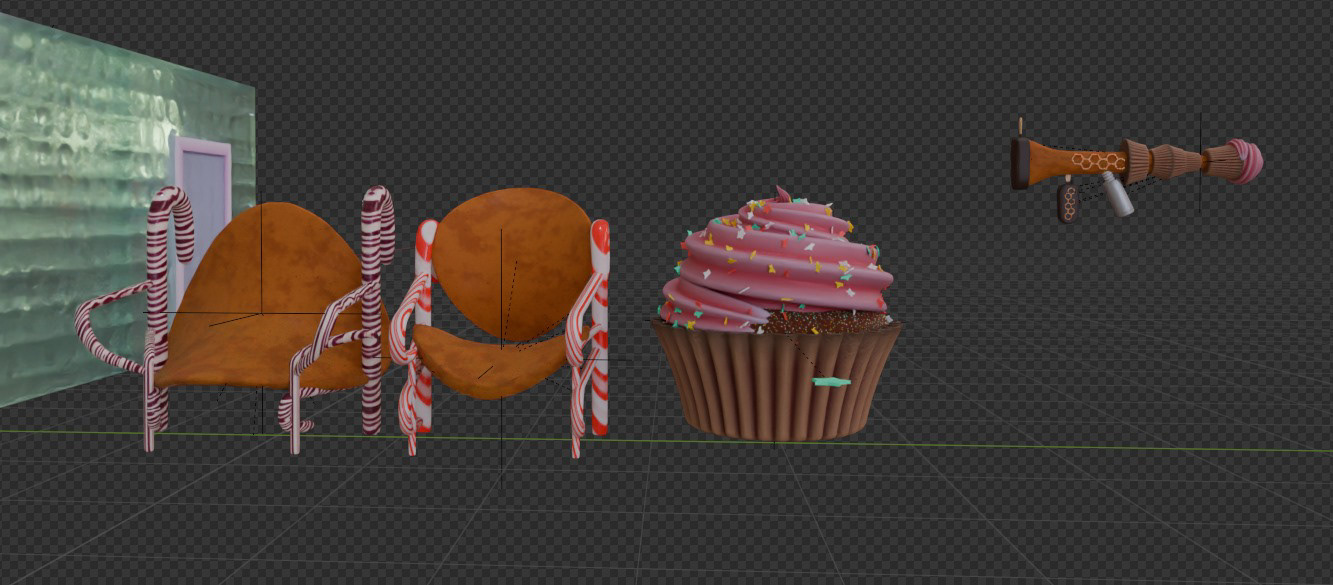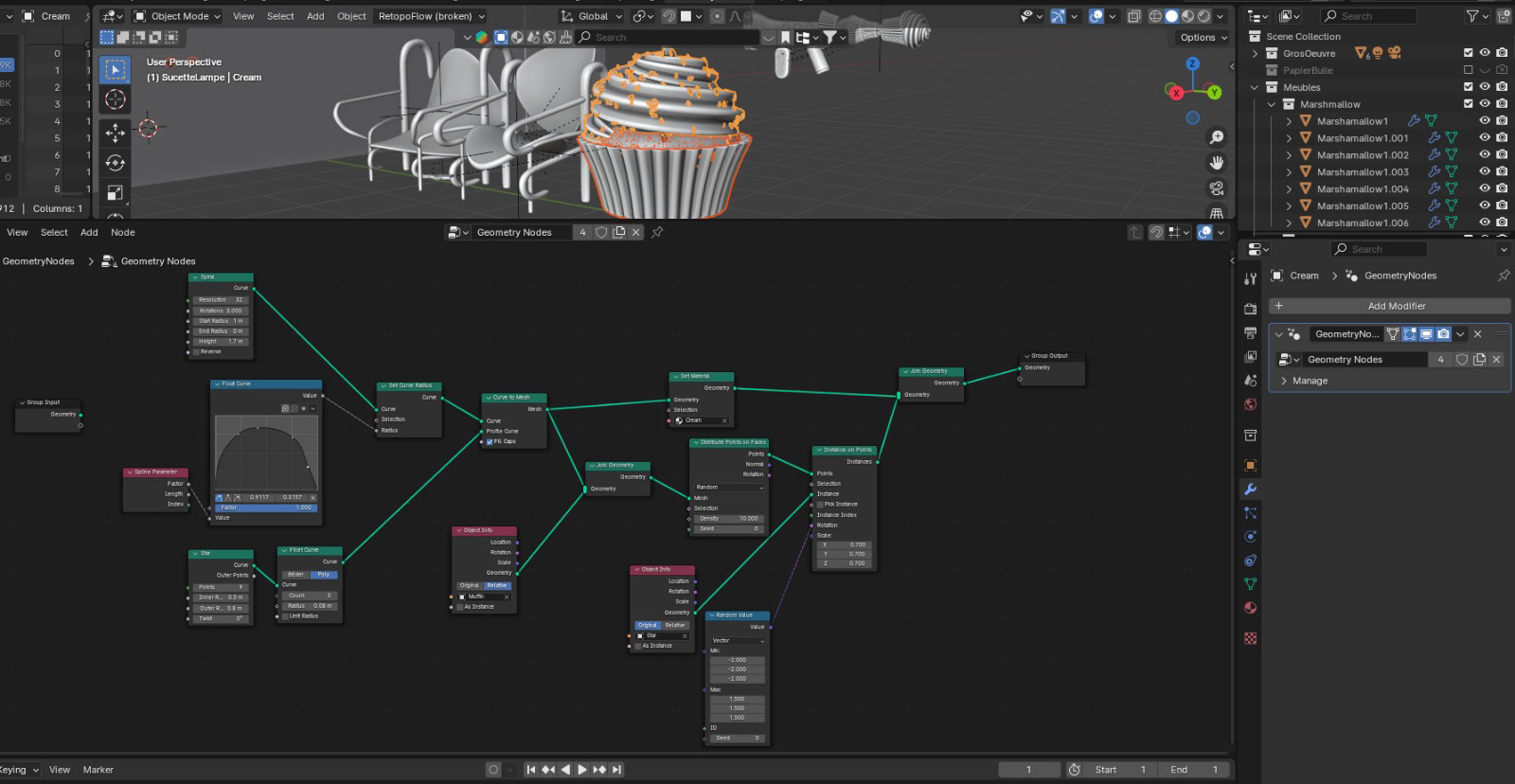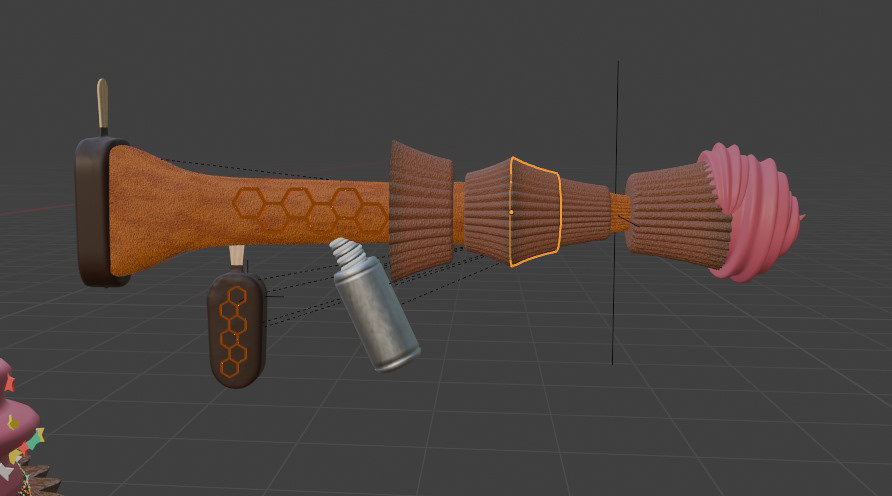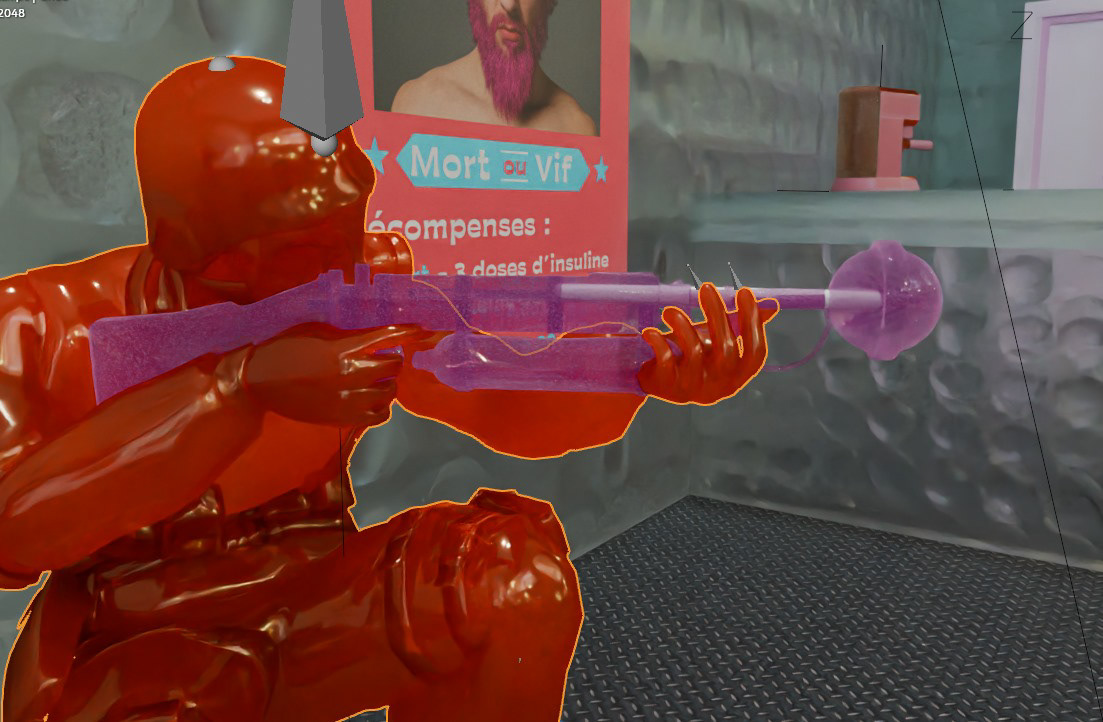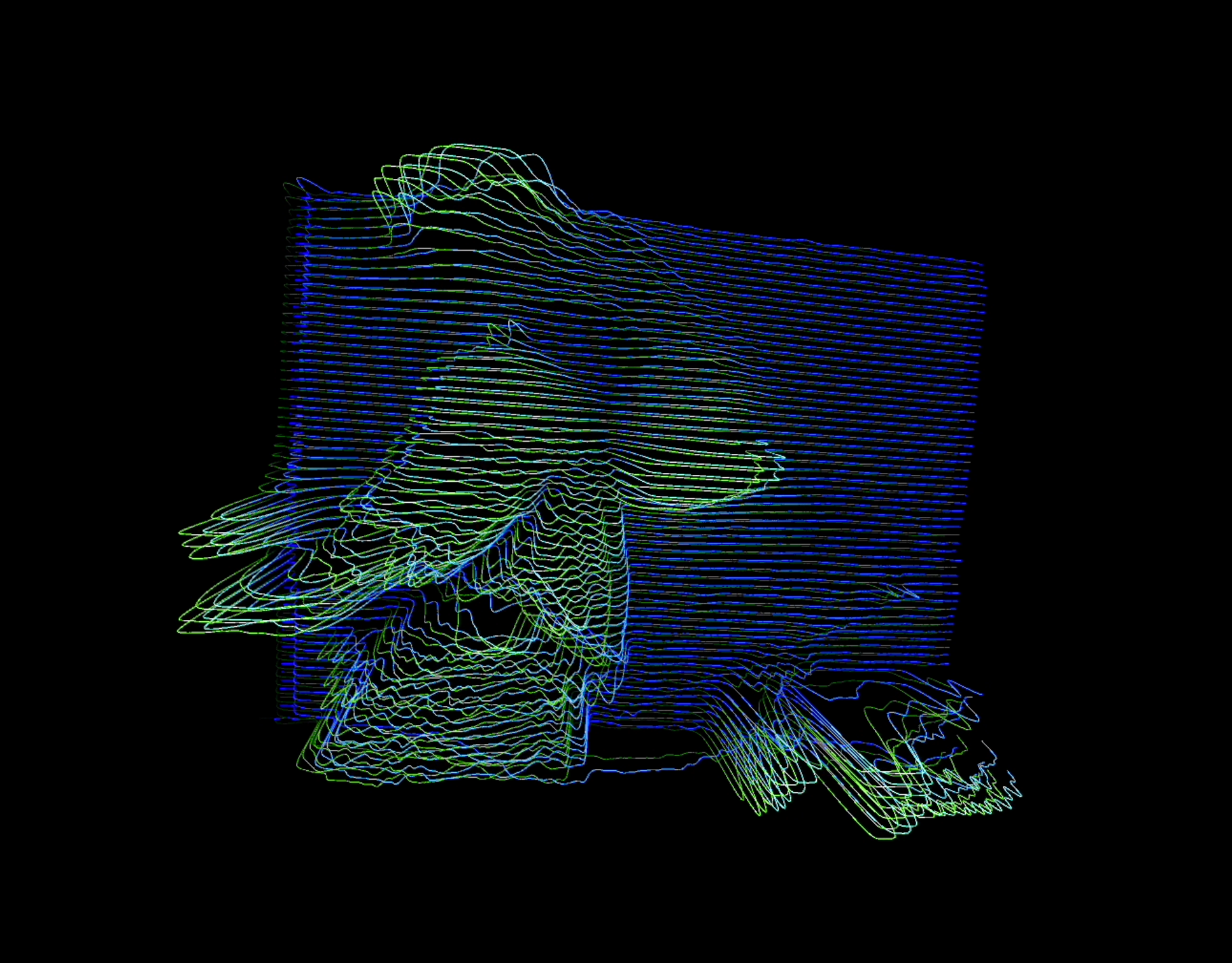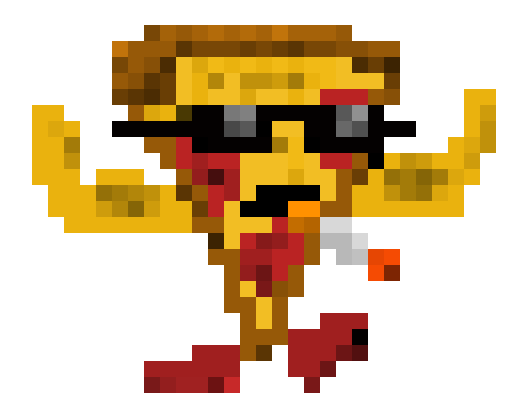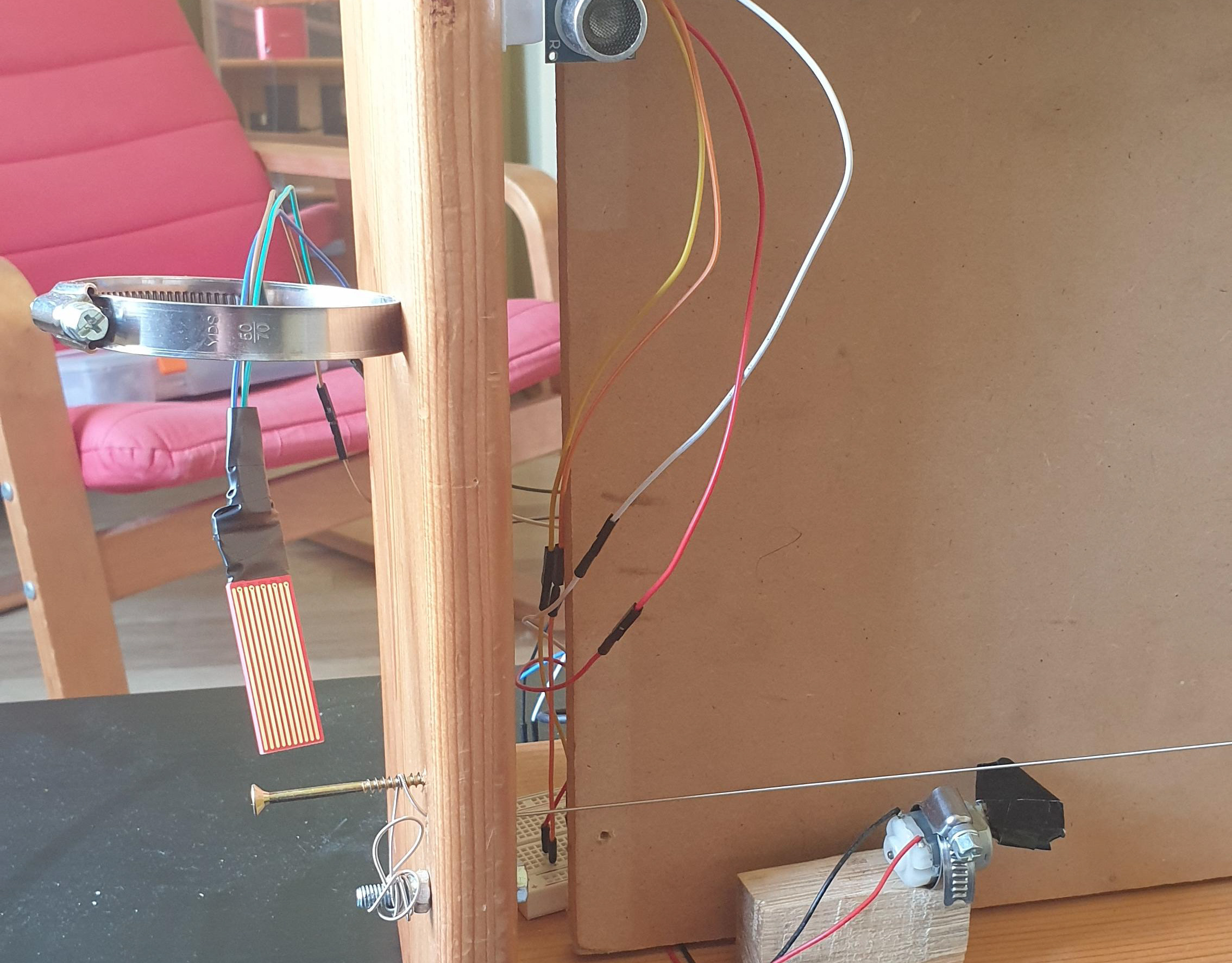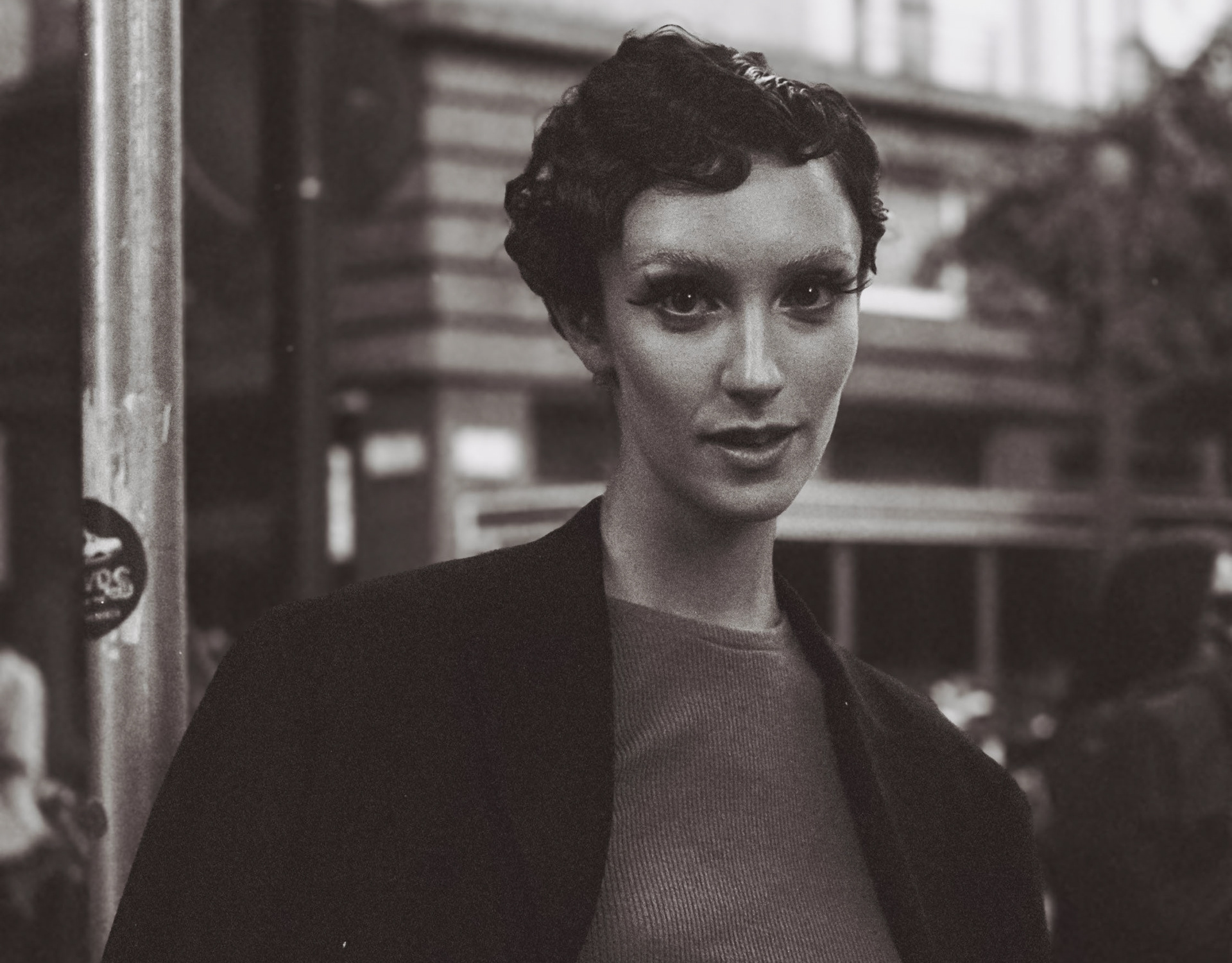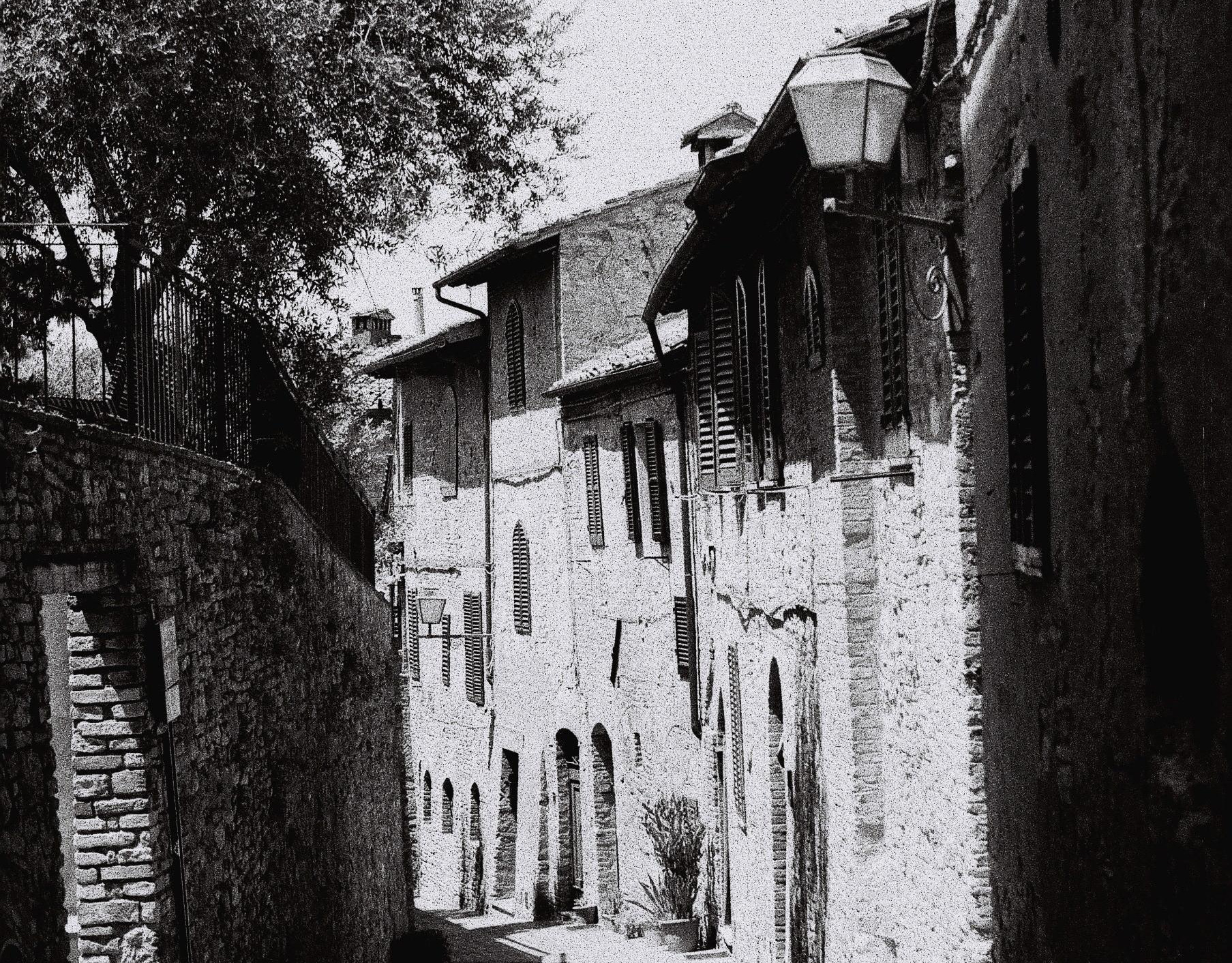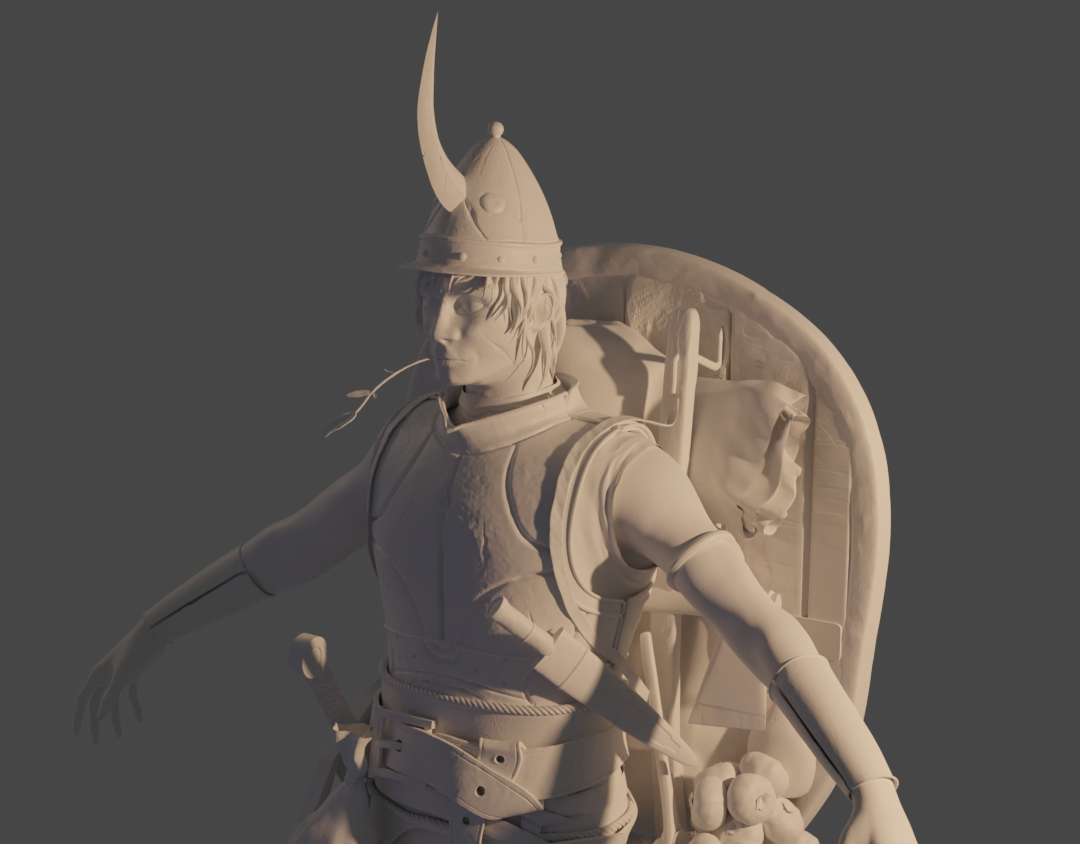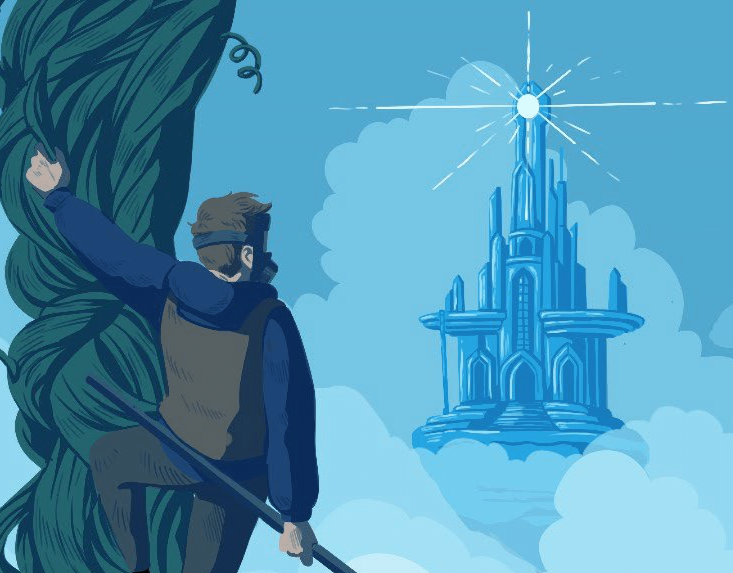Pitch
The PFE stands for "Projet de fin d’études," which means "final year project" in French. This is a project we had to complete in a group of three during our last year of Digital Arts studies at ESA Saint-Luc. During the first half of the year, I was doing an Erasmus exchange at Polimi in Milan, so I joined a group when I came back in February. I was fortunate to be able to join my two friends, Basile Masson and Romain Lefebvre, who already had a really interesting and funny project concept: "HUMANITEA."
The spectator gets to wear a VR headset linked to a robot with a camera, made with Arduinos. The VR headset allows the spectator to control the camera on the robot while it moves through our miniature town, Candhitown. They also wear a headset through which they can hear the voice of Candice, our narrator, who explains everything there is to know about the town.
Humanitea is a multimedia project of interactive and experimental cinema. The viewer has the opportunity to discover the city of Canditown through a camera mounted on a robot that takes them along a route to explore the city. The viewer controls the camera’s orientation using the VR headset they are wearing. During the experience, the video alternates between the robot's camera and tours using 3D 360° video.
Humanitea is an experimental cinema project where the viewer steps into the shoes of a potential customer approached by a soda manufacturing company with unusual methods: it reduces the size of individuals to offer them a more pleasant life within a miniature city in exchange for well-paid work in the soda factory. The viewer is then invited to board a small train, accompanied by a voice-over that describes the details of this miniature working-class city. However, during the tour, a technical incident occurs, revealing troubling clues about the strange nature of this city. Following a failed Mentos attack at the factory, general panic ensues, and in the chaos, the secret ingredient of the soda is revealed: dried and infused humans.
We refer to this as experimental cinema because we have made it interactive by using a VR headset, allowing the viewer to see through the robot's onboard camera while alternating with 3D 360° narrative videos.
A poster I made for the decoration of the exhibition space. It introduced the universe of Humanitea and invited people to try it.
The final video :
Candhitown, the maquette.
We worked a lot on a model that would communicate our universe: candy-like, comic but disturbing if you dive in and notice the strange details. We made about thirty miniature houses, a road that the robot had to follow like a track, a bridge that goes over the road.
Mountain (mesh, papier-mâché covering, covered with liquid glue mixed with sugar, use of waxing wax for the rock)
Special buildings: A classic house from Candhy TownGoodies store, Anti-Mentos brigade (BAM)
Decor elements: fake trees and bushes, biscuits for signs, biscuits for sidewalks.
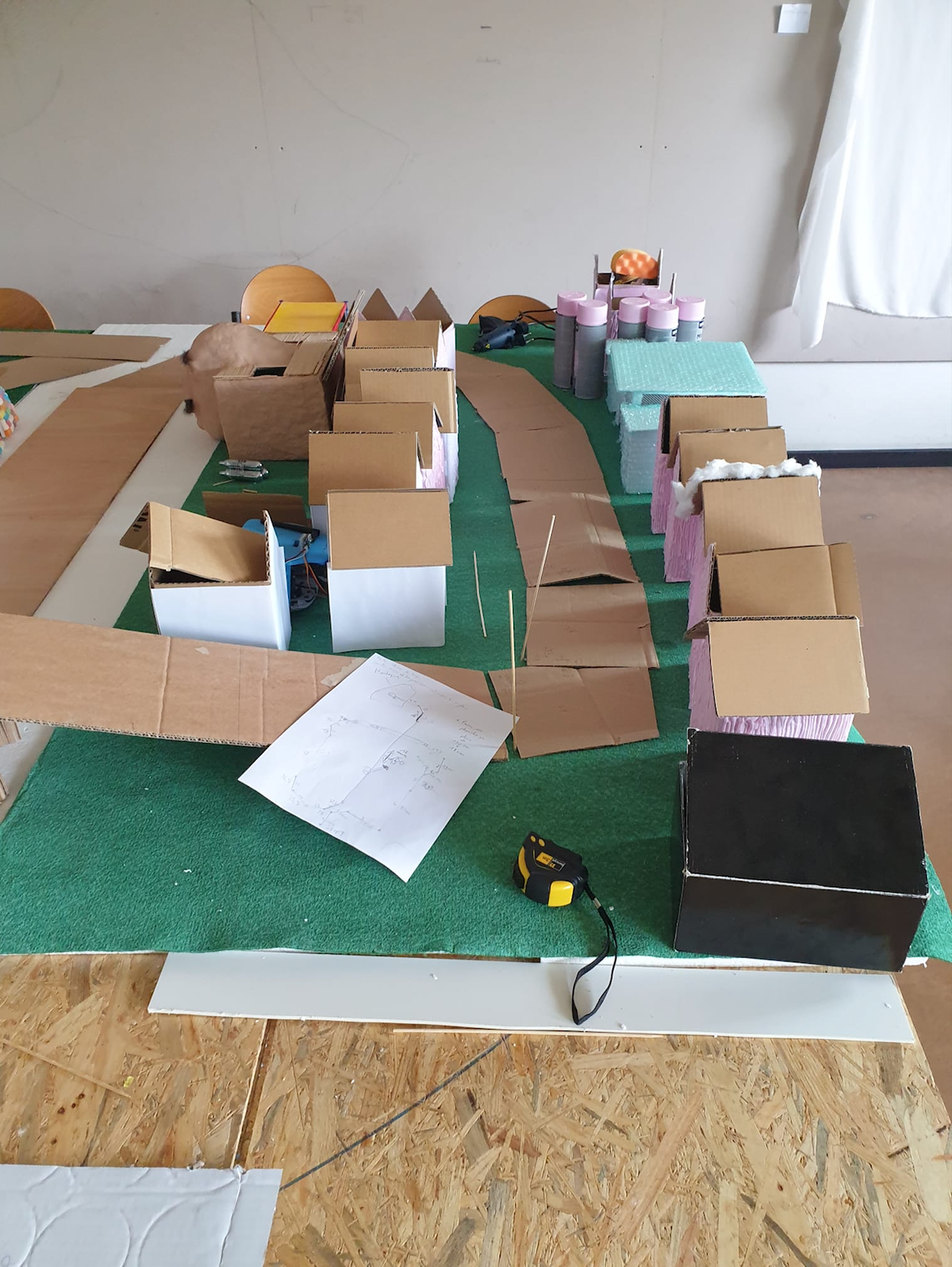
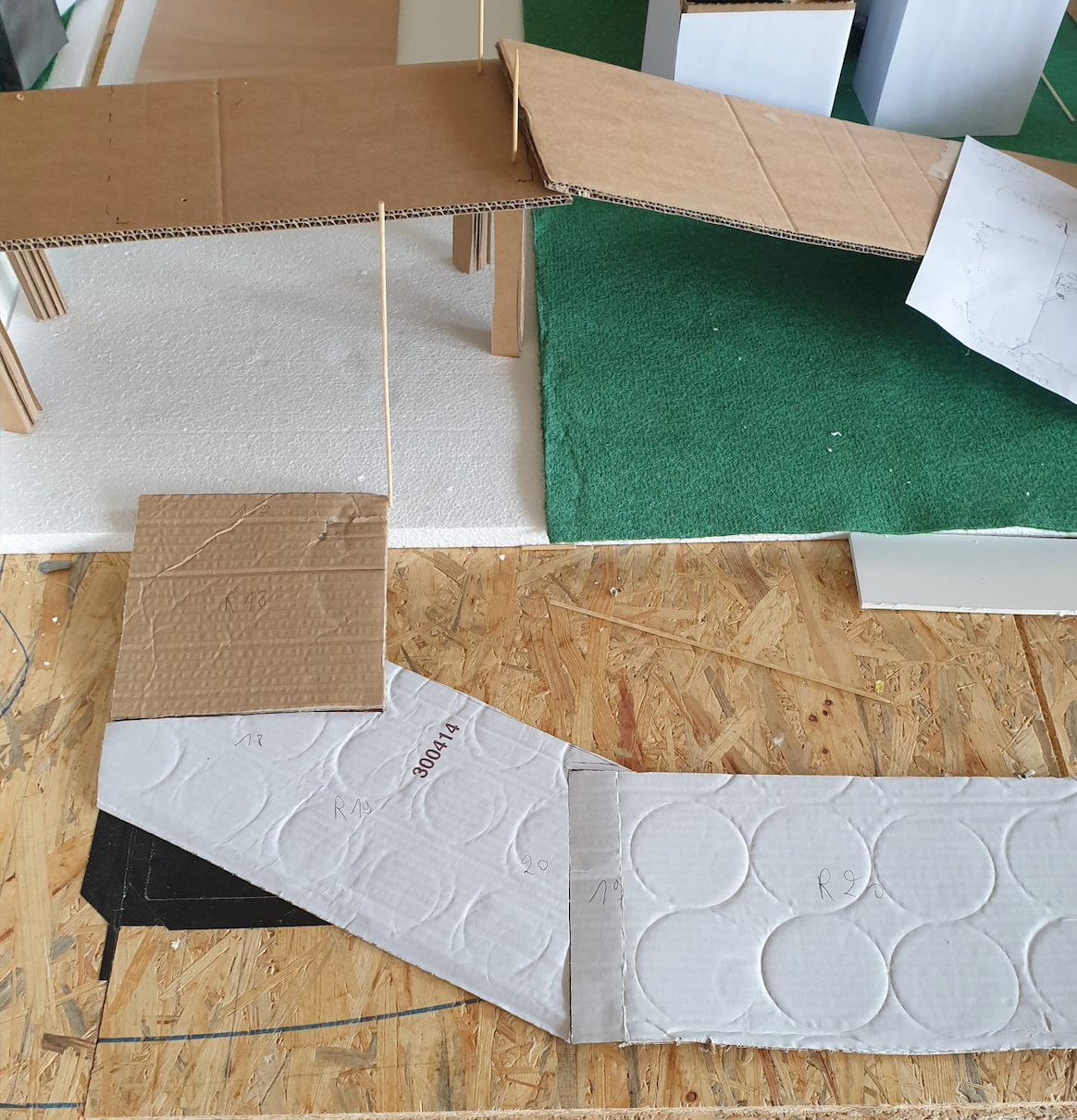
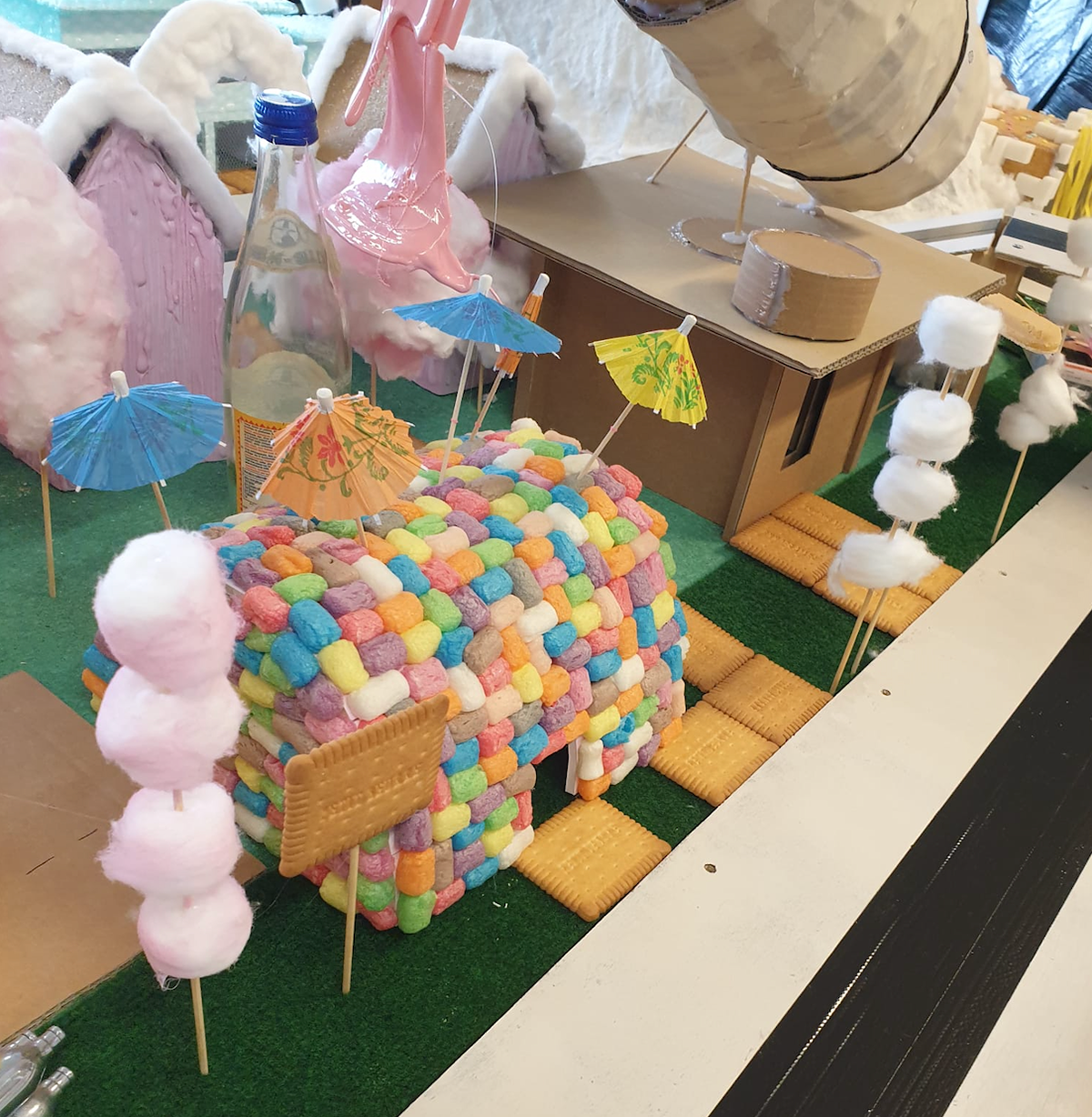
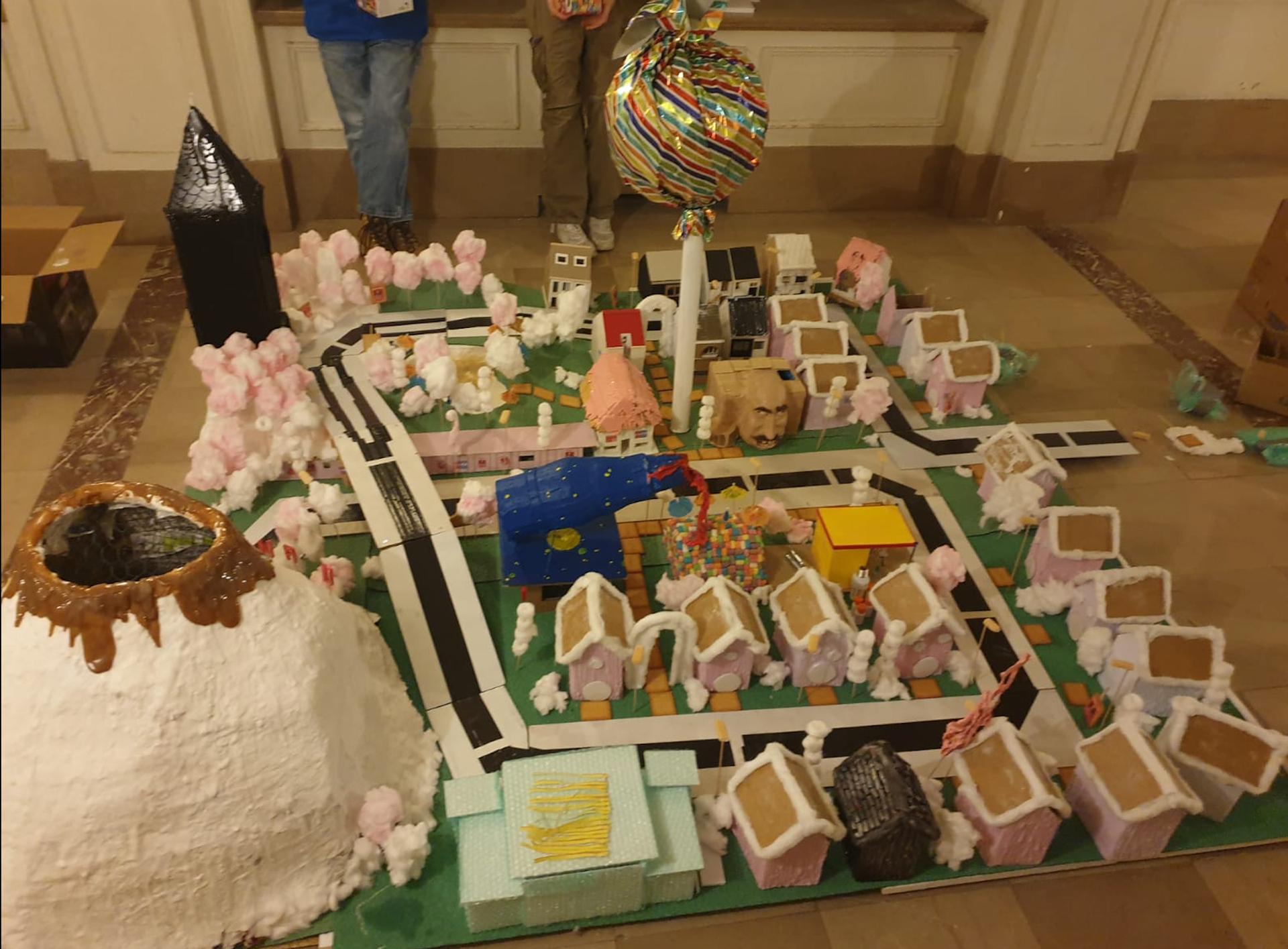
We wanted to bring to life certain special buildings in the city, as well as the Candhy Soda Factory hidden in the mountain. To do this, we created the interiors of these buildings in 3D and then made 360° videos narrated by a voice-over, allowing the viewer wearing the VR headset to visit these places.
Here are 3D spaces I made
You can visit them by clicking and dragging the mouse in the video.
Here are some exemples of the work pipeline in Blender for the creation of the scenes above.
A lot of the materials/texture were made in Blender, using the texture and geometry nodes, allowing to generate them on the surface or modify it easily. The node pipeline allowed me to control and adapt the results whenever I needed it.
